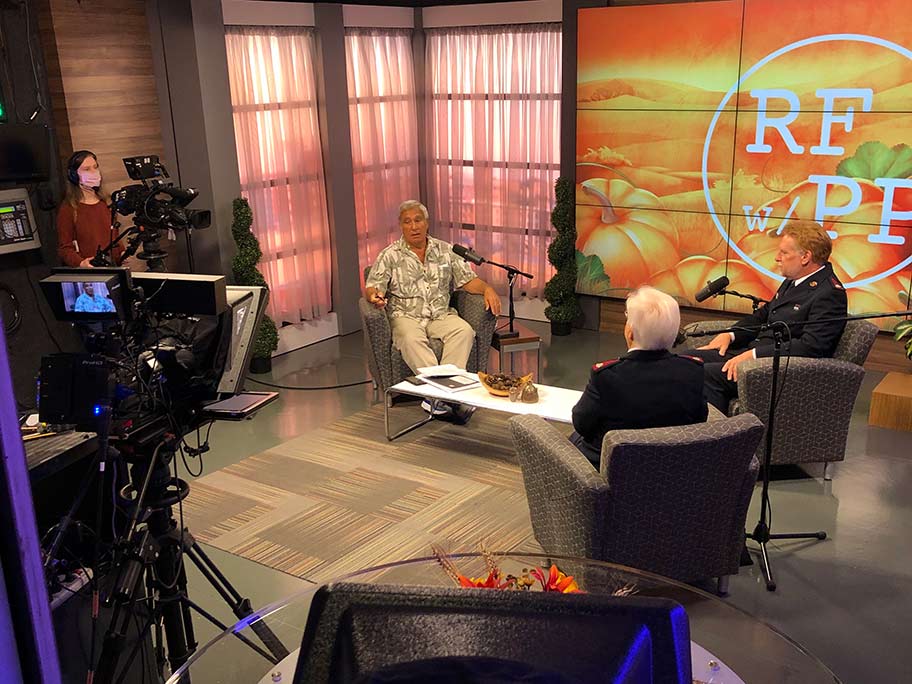
Tag: Futures Lab Update
Production studio at RJI receives facelift
The production studio at the Donald W. Reynolds Journalism Institute at the Missouri School of Journalism has received a facelift. Thanks to the upgrades, staff will now be able to deliver a product more in line with what audiences are accustomed to seeing online and on television in the 21st century, says Travis McMillen, senior … Continued
Kat Duncan joins RJI as senior video editor
The Donald W. Reynolds Journalism Institute has named Kat Duncan, a former photo and video editor at the San Francisco Chronicle, as its new senior video editor. Among Duncan’s responsibilities will be working with RJI’s Futures Lab staff as they rebrand and redevelop the lab’s online show, “RJI Futures Lab Video Update.” The new show, … Continued
FL#200: Experimenting with interactive VR at Crossover
A group of filmmakers at Crossover is pushing the boundaries of immersive documentary storytelling by incorporating technologies like facial recognition into a virtual reality experience. Mark Atkin, a director of Crossover, tells us about the projects and explains how this kind of work might change viewers’ minds and behaviors. Reporting by Lindsey Miller, Rachel Wise … Continued
FL#199: Language recognition via Speechmatics
A British company called Speechmatics is working to build more accurate technology to turn spoken words into text across a wide range of different languages. We explore how the system might help journalists in the future. Reporting by Lily Oppenheimer, Rachel Wise and Jessica King. Additional information A key aspect of the technology is that … Continued
FL#198: Ideas for social video from VICE Media
The growth of Facebook Live and the continued popularity of video on social media platforms opens the door for new ways to tell stories visually. We get some ideas from Adam Banicki, senior producer at VICE Media. Reporting by Lily Oppenheimer, Rachel Wise and Jessica King.
FL#197: Following the crowd with Populace
The startup Populace uses data from social media and other sources to display crowd densities at various locations across urban areas. As a result, the system could make it possible for journalists to find out automatically whenever an unusually large crowd gathers in a public place. We find out how it works from founder and … Continued
FL#196: Automation at The Washington Post
Jeremy Gilbert, director of strategic initiatives at The Washington Post, says computer automation could increase a newsroom’s capabilities in three important ways: analyzing vast amounts of data, putting information into digestible forms, and tailoring the end result for each individual user. We dive into the details and find out how the Post has experimented already. … Continued
FL#194: Immersive video conversations with Portals
Portals take video conferencing to the next level. The project combines new technology with a set of gold-painted shipping containers to enable people across the globe to converse as if they were side by side. Amar Bakshi, a former journalist who created the project, explains how it could expand upon traditional coverage of global news … Continued
FL#193: Searching within video files via LivingLens
LivingLens offers an artificial intelligence-driven technology that can enable clients to search for specific emotions or sentiments within video files. Co-founder and Chief Executive Officer Carl Wong tells us how it works. Reporting by Sarah Sabatke, Rachel Wise and Jessica King.
FL#192: Audio sharing via SoundBYTE
(Video missing) SoundBYTE is a social app that allows users to record and share audio with followers around the world, 14 seconds at a time. We find out how it works from Co-founder and Chief Executive Officer Dan Kearns. Reporting by Kexin Sun, Rachel Wise and Jessica King. Additional information The app is free and … Continued

